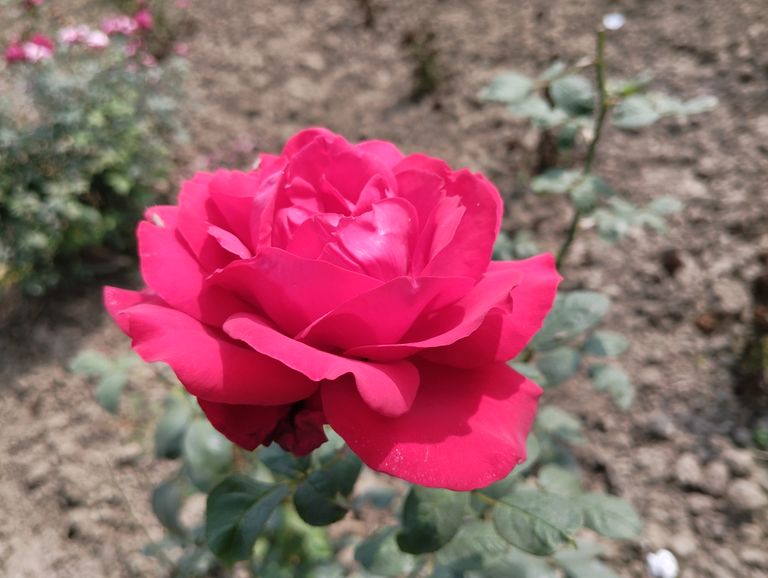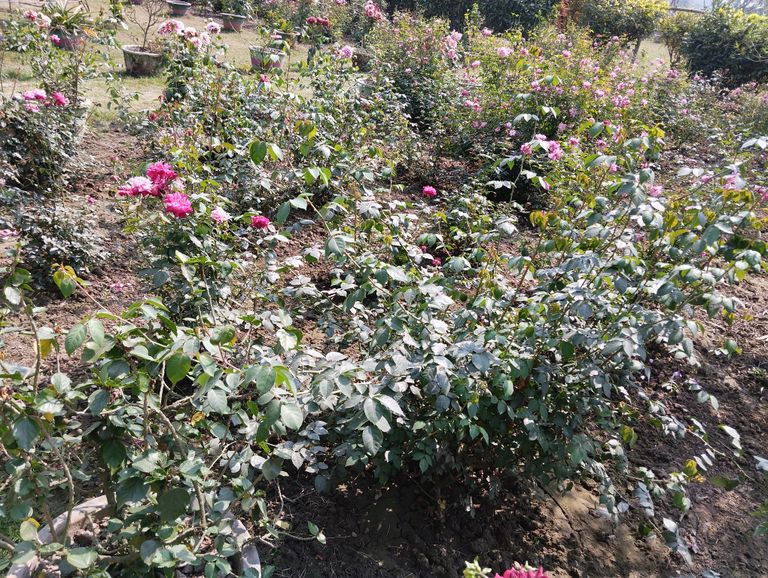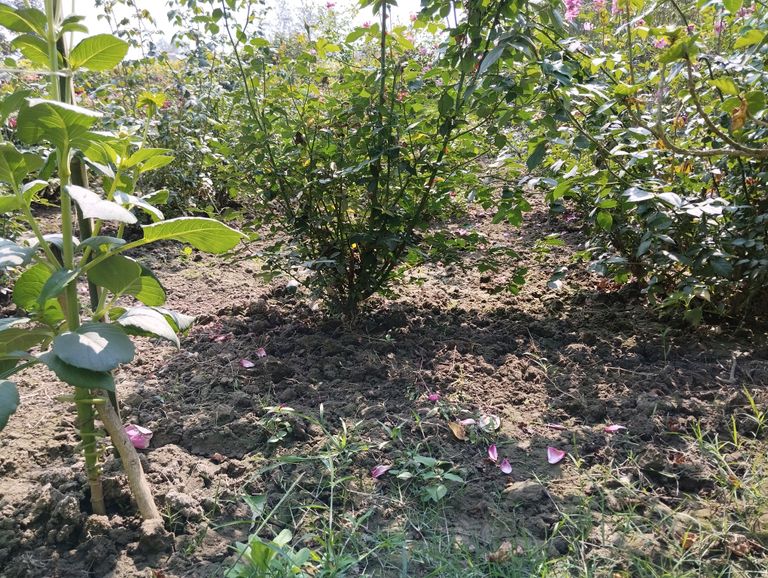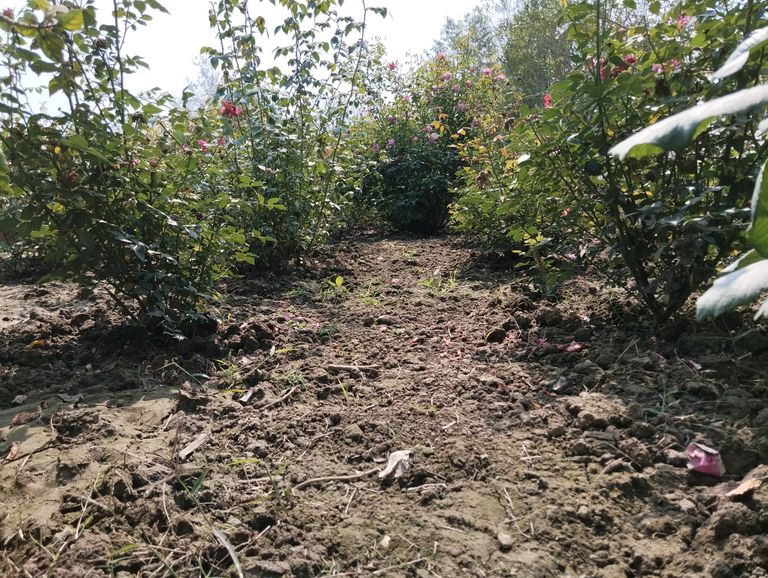
Rose Cultivation A Complete Guide to Growing Beautiful Roses.
Roses are among the most beloved flowers in the world, admired for their beauty, fragrance, and symbolic meaning. Whether you are a home gardener or planning commercial rose farming, understanding the right techniques is essential for successful cultivation. This guide will walk you through everything you need to know about growing healthy and vibrant roses.
- Understanding Different Types of Roses
There are various types of roses, each with unique characteristics. Some of the most popular categories include:
Hybrid Tea Roses – Large, single blooms with long stems, ideal for cut flowers.
Floribunda Roses – Clusters of flowers on a single stem, offering continuous blooming.
Grandiflora Roses – A cross between Hybrid Tea and Floribunda, producing large clusters.
Climbing Roses – Long, flexible canes that grow over fences, walls, and trellises.
Shrub Roses – Hardy, low-maintenance, and disease-resistant varieties.
Miniature Roses – Small plants with tiny blooms, perfect for containers and indoor gardening.
Choosing the right type of rose depends on your climate, space availability, and intended purpose.
- Choosing the Right Location for Rose Cultivation
Roses thrive best in locations that provide:
Plenty of Sunlight – At least 6–8 hours of direct sunlight per day.
Well-Drained Soil – Roses dislike waterlogging; sandy loam soil with good drainage is ideal.
Air Circulation – Proper spacing ensures good air circulation, reducing the risk of fungal diseases.
Protection from Strong Winds – While roses need sunlight, harsh winds can damage delicate blooms.
- Soil Preparation and Planting
Soil Preparation:
The ideal soil pH for roses is 6.0–6.5 (slightly acidic).
Enrich the soil with organic matter like compost or well-rotted manure.
Add bone meal or phosphorus-rich fertilizers to support root growth.
Planting Roses:
Bare-root roses should be planted in late winter or early spring.
Potted roses can be planted anytime during the growing season.
Dig a hole twice the size of the root ball, place the plant inside, and cover it with soil.
Water thoroughly after planting and apply mulch around the base to retain moisture.
- Watering and Fertilizing Roses
Watering Guidelines:
Roses need deep watering (1–2 inches per week) rather than frequent shallow watering.
Water at the base of the plant to prevent fungal diseases on leaves.
Avoid overhead watering in the evening to reduce moisture-related diseases.
Fertilizing Schedule:
Early Spring – Apply a balanced fertilizer (10-10-10) when new growth appears.
Before Blooming – Use a phosphorus-rich fertilizer to enhance flowering.
Mid-Summer – Apply a light dose of fertilizer for continuous blooms.
Late Summer/Early Fall – Reduce fertilization to help plants prepare for dormancy.
Organic fertilizers like compost tea, banana peels, and fish emulsion can also be used to boost soil health.
- Pruning and Maintenance
Why Prune Roses?
Pruning helps remove dead or diseased wood, improves air circulation, and encourages new growth.
When to Prune?
Spring Pruning – Best for most roses; promotes new growth and strong stems.
Summer Deadheading – Removing spent blooms encourages continuous flowering.
Winter Pruning – In cold climates, light pruning prevents winter damage.
How to Prune Roses?
Use sharp, clean pruning shears to make clean cuts.
Cut 1/4 inch above an outward-facing bud to encourage outward growth.
Remove weak, dead, or diseased branches to keep the plant healthy.
- Common Pests and Diseases
Pests Affecting Roses:
Aphids – Small insects sucking sap from new growth; control with neem oil or insecticidal soap.
Spider Mites – Tiny pests causing yellowing leaves; spray with water or neem oil.
Japanese Beetles – Chew rose petals; remove them by hand or use traps.
Diseases and Prevention:
Black Spot – Fungal disease causing dark spots on leaves; prevent with good air circulation and fungicide sprays.
Powdery Mildew – White, powdery coating on leaves; avoid overhead watering and prune affected areas.
Rust – Orange or brown spots on the underside of leaves; remove infected leaves and use fungicide.
- Propagation Methods
Roses can be propagated through various methods:
Cuttings – The most common method; take a 6-inch stem cutting, dip it in rooting hormone, and plant it in soil.
Grafting – Used in commercial rose farming to combine strong rootstocks with desired rose varieties.
Layering – Bending a low stem and burying part of it in soil until roots form.
Seeds – Less common, as it takes longer and doesn’t guarantee the same characteristics as the parent plant.
- Growing Roses in Containers
If you have limited space, growing roses in pots is a great alternative.
Use a large container (at least 15 inches deep) for proper root growth.
Choose compact or miniature rose varieties suited for containers.
Ensure the pot has drainage holes to prevent waterlogging.
Use high-quality potting mix and fertilize regularly to maintain nutrients.
- Harvesting and Storing Roses
For cut roses that last longer:
Harvest early morning or late evening when temperatures are cool.
Use sharp scissors to cut stems at a 45-degree angle.
Remove lower leaves and place stems in clean water immediately.
Store roses in a cool place away from direct sunlight.
- Commercial Rose Farming for Profit
If you are interested in commercial rose cultivation, consider these factors:
Market Demand – Roses are in high demand for bouquets, weddings, and decorations.
High-Yield Varieties – Choose disease-resistant and high-blooming varieties.
Greenhouse Cultivation – Ensures year-round production and better control over growing conditions.
Export Opportunities – Roses have a strong global market, especially in Europe and the USA.
Growing roses successfully requires patience, care, and knowledge of proper techniques. Whether you're a hobbyist gardener or a commercial farmer, following these guidelines will help you cultivate healthy, beautiful roses with abundant blooms. By ensuring the right soil conditions, regular maintenance, and pest control, your rose garden will flourish and bring joy for years to come. Would you like additional tips on a specific aspect of rose cultivation? Let me know.

Common Diseases and Pests of Rose Plants: Causes, Symptoms, and Solutions
Roses are one of the most beloved flowers worldwide, known for their beauty and fragrance. However, like any other plant, roses are susceptible to various diseases and pests that can affect their health and bloom quality. Understanding the causes, symptoms, and remedies of these diseases can help gardeners maintain healthy and vibrant rose plants.
- Fungal Diseases of Rose Plants
A. Black Spot (Diplocarpon rosae)
Causes: This fungal disease thrives in warm, humid conditions and spreads through water splashes and infected leaves.
Symptoms:
Round black spots with yellow halos on leaves
Leaves turning yellow and falling off
Weakened plant growth
Solutions:
Remove infected leaves and dispose of them properly
Apply fungicides containing chlorothalonil or mancozeb
Ensure good air circulation by pruning dense foliage
Avoid overhead watering
B. Powdery Mildew (Podosphaera pannosa)
Causes: This fungus develops in dry, warm conditions with poor air circulation.
Symptoms:
White powdery patches on leaves, stems, and buds
Leaves curling and becoming distorted
Reduced flower production
Solutions:
Increase air circulation by spacing plants properly
Use sulfur-based or neem oil sprays
Water plants in the morning to prevent excess moisture buildup
C. Rust (Phragmidium spp.)
Causes: Rust fungi thrive in warm and moist conditions.
Symptoms:
Small orange or reddish-brown pustules on the underside of leaves
Yellowing and premature leaf drop
Stunted growth
Solutions:
Remove and destroy affected leaves
Apply fungicides like copper-based sprays
Keep leaves dry by watering at the base
D. Botrytis Blight (Botrytis cinerea)
Causes: This fungus attacks rose plants in cool, damp conditions.
Symptoms:
Gray mold covering buds and flowers
Flowers failing to open properly
Leaves and stems developing brown patches
Solutions:
Remove infected flowers and stems
Improve air circulation and reduce humidity
Use fungicides like thiophanate-methyl
- Bacterial Diseases of Rose Plants
A. Crown Gall (Agrobacterium tumefaciens)
Causes: This bacterial infection enters through wounds in the plant.
Symptoms:
Swollen, rough-textured galls on stems and roots
Stunted growth and weak flowering
Leaves turning yellow
Solutions:
Remove infected plants and destroy them
Disinfect gardening tools with bleach
Avoid injuring the plant during pruning
B. Bacterial Leaf Spot (Xanthomonas spp.)
Causes: This disease spreads through contaminated water and plant debris.
Symptoms:
Small black or brown spots on leaves
Leaves curling and falling off
Slow plant growth
Solutions:
Remove affected leaves and destroy them
Use copper-based bactericides
Ensure good air circulation
- Viral Diseases of Rose Plants
A. Rose Mosaic Virus
Causes: This virus is transmitted through infected grafts and rootstocks.
Symptoms:
Yellow or light green mosaic patterns on leaves
Stunted growth and fewer flowers
Distorted leaf shapes
Solutions:
Remove and destroy infected plants
Use virus-free grafting materials
Control aphids and other insect vectors
B. Rose Rosette Disease
Causes: This viral disease is spread by eriophyid mites.
Symptoms:
Abnormally fast-growing, deformed red shoots (witches' broom)
Excessive thorn growth
Reduced flower production
Solutions:
Prune and destroy infected shoots
Control mite populations using insecticidal sprays
Remove severely affected plants
- Common Pests of Rose Plants
A. Aphids
Causes: These small, sap-sucking insects multiply rapidly in warm weather.
Symptoms:
Clusters of tiny green, black, or yellow insects on buds and stems
Distorted leaves and buds
Sticky honeydew secretion attracting ants
Solutions:
Spray plants with neem oil or insecticidal soap
Encourage natural predators like ladybugs
Use a strong jet of water to wash aphids off
B. Spider Mites
Causes: Hot and dry conditions promote mite infestations.
Symptoms:
Tiny red or yellow mites on the undersides of leaves
Fine webbing covering leaves and stems
Leaves turning yellow and dropping
Solutions:
Increase humidity around plants
Spray with miticides or neem oil
Wash plants with water regularly
C. Japanese Beetles
Causes: These beetles feed on rose foliage and flowers in summer.
Symptoms:
Skeletonized leaves with only veins remaining
Chewed flower petals
Swarms of beetles on plants
Solutions:
Hand-pick beetles and drop them into soapy water
Use neem oil or pyrethrin-based sprays
Set up pheromone traps away from rose bushes
D. Thrips
Causes: These tiny insects damage rosebuds and flowers.
Symptoms:
Deformed and discolored flower petals
Browning of buds before opening
Sticky leaves
Solutions:
Prune and destroy affected flowers
Use insecticidal soap or spinosad spray
Encourage natural predators like lacewings
- Preventive Measures for Healthy Roses
To keep your rose plants disease-free and thriving, follow these best practices:
- Proper Spacing: Ensure good air circulation to prevent fungal growth.
- Regular Pruning: Remove dead and diseased parts to encourage healthy growth.
- Balanced Watering: Avoid overwatering and keep foliage dry.
- Use Organic Mulch: Mulch helps retain soil moisture and prevents soil-borne diseases.
- Apply Fertilizers Wisely: Use balanced fertilizers to promote plant immunity.
- Monitor for Early Signs: Regularly inspect leaves, stems, and flowers for any symptoms. By following these preventive measures and using effective treatments, you can enjoy beautiful, healthy rose plants with vibrant blooms throughout the growing season. Happy gardening.

Rose Petal Tea: A Soothing Elixir for Health and Wellness
Rose petal tea is a fragrant and delightful herbal infusion made from dried rose petals. Revered for centuries in traditional medicine and culinary practices, this tea offers a range of health benefits, from improving digestion to enhancing skin health. In this blog, we will explore everything about rose petal tea—its history, health benefits, preparation methods, and tips for the best brewing experience.
The History of Rose Petal Tea
Roses have been cherished for their beauty and fragrance for thousands of years. In ancient China, Egypt, and Persia, roses were not only used for their ornamental value but also for medicinal purposes. Rose tea, derived from the petals of these flowers, was often used in Ayurvedic and traditional Chinese medicine to treat ailments like digestive issues, stress, and inflammation.
In Persian culture, roses were considered a symbol of love and purity, and rose water, along with rose tea, was commonly used in both medicine and cuisine. Similarly, in ancient Rome, rose petals were infused in warm water for their soothing and cooling effects.
Today, rose petal tea is gaining popularity worldwide as a caffeine-free, antioxidant-rich drink that supports overall well-being.
Health Benefits of Rose Petal Tea
Drinking rose petal tea provides a variety of health benefits, thanks to its rich nutritional profile. Here are some of the key benefits:
- Rich in Antioxidants
Rose petals contain high levels of antioxidants, such as polyphenols and flavonoids. These compounds help neutralize harmful free radicals in the body, reducing the risk of chronic diseases like heart disease and cancer.
- Supports Digestive Health
Rose petal tea has mild laxative properties that can aid digestion and relieve constipation. It also helps soothe stomach discomfort, bloating, and acidity.
- Enhances Skin Health
Packed with vitamins A, C, and E, rose tea promotes healthy, glowing skin. Vitamin C, in particular, helps boost collagen production, reducing wrinkles and improving skin elasticity. Drinking rose petal tea regularly can also help combat acne and skin inflammation.
- Reduces Stress and Anxiety
The natural aroma of rose tea has a calming effect on the mind. It helps reduce stress, anxiety, and symptoms of depression. The tea’s mild sedative properties also promote better sleep quality.
- Boosts Immunity
Rose petals are loaded with vitamin C, which strengthens the immune system and helps the body fight off infections. Drinking rose tea during the cold and flu season can help prevent common illnesses.
- Regulates Menstrual Cycle and Relieves Cramps
Rose petal tea is often used as a natural remedy for menstrual irregularities and cramps. It helps balance hormones and provides relief from PMS symptoms.
- Detoxifies the Body
Rose tea acts as a natural detoxifier, flushing out toxins from the body and promoting kidney and liver health. Regular consumption can help cleanse the system and improve overall vitality.
How to Make Rose Petal Tea
Making rose petal tea at home is simple and requires only a few ingredients. Follow this easy recipe to enjoy a soothing cup of homemade rose tea.
Ingredients:
1 cup fresh rose petals (or 2 tablespoons dried rose petals)
2 cups hot water
1 teaspoon honey or lemon (optional)
Instructions:
- Prepare the Petals: If using fresh rose petals, ensure they are organic and pesticide-free. Rinse them thoroughly under running water.
- Boil Water: Heat 2 cups of water until it reaches a gentle simmer.
- Steep the Petals: Add the rose petals to a teapot or cup. Pour the hot water over them and let them steep for 5–10 minutes.
- Strain and Serve: Strain the tea into a cup, discarding the petals. Add honey or lemon for extra flavor if desired.
- Enjoy: Sip and relax with your aromatic and health-boosting rose petal tea.
Tips for the Best Rose Petal Tea
Choose Organic Roses: Always use organic, pesticide-free roses to avoid consuming harmful chemicals.
Use Fresh or Dried Petals: Both fresh and dried petals work well, but dried petals have a more concentrated flavor.
Experiment with Flavors: Enhance your tea by adding ingredients like cinnamon, ginger, or mint.
Sweeten Naturally: Use honey, maple syrup, or stevia instead of refined sugar for a healthier option.
Variations of Rose Petal Tea
- Rose and Green Tea:
Combine rose petals with green tea leaves for an antioxidant-rich blend.
- Rose and Chamomile Tea:
Mix rose petals with chamomile for a calming, sleep-inducing drink.
- Rose and Hibiscus Tea:
Add dried hibiscus flowers for a tangy, vitamin C-packed infusion.
- Iced Rose Tea:
Chill your brewed tea and serve over ice with lemon and honey for a refreshing summer drink.
Final Thoughts
Rose petal tea is more than just a fragrant herbal drink—it’s a powerhouse of health benefits. From boosting immunity to enhancing skin health and reducing stress, this floral infusion is a wonderful addition to your daily routine. Whether you enjoy it hot or cold, rose tea offers a natural and delicious way to nourish your body and mind.
So, why not brew a cup today and indulge in the soothing embrace of rose petals? Let every sip transport you to a world of tranquility and wellness. Would you like me to include anything else in this blog, such as more recipes or additional historical details.
